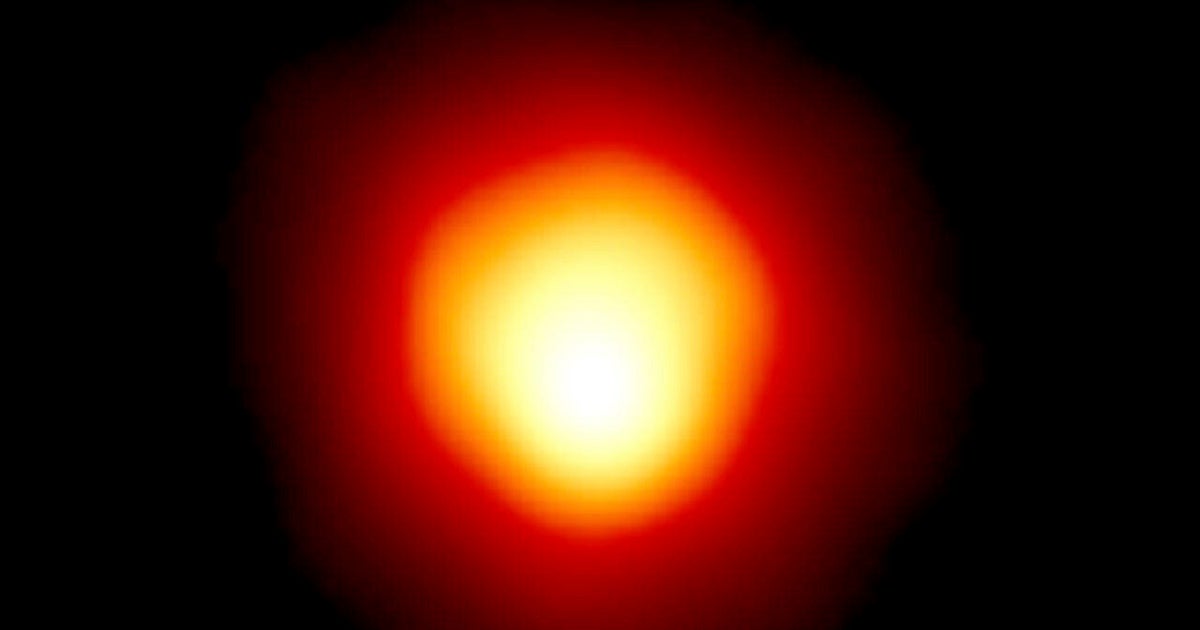[ad_1]
One of many greatest and brightest stars within the evening sky will momentarily vanish as an asteroid passes in entrance of it to provide a one-of-a-kind eclipse. The occasion ought to be seen to thousands and thousands of individuals and it’ll even be livestreamed.
The uncommon and fleeting spectacle, late Monday into early Tuesday, will seemingly be seen to folks alongside a slender path stretching from central Asia’s Tajikistan and Armenia, throughout Turkey, Greece, Italy and Spain, to Miami and the Florida Keys and at last, to components of Mexico.
The star is Betelgeuse, a crimson supergiant within the constellation Orion. The asteroid is 319 Leona, a slowly rotating, rectangular area rock in the primary asteroid belt between Mars and Jupiter.
How far is Betelgeuse from Earth?
An estimated 700 light-years away, Betelgeuse is seen with the bare eye. Binoculars and small telescopes will improve the view. A lightweight-year is 5.8 trillion miles.
When will Betelgeuse explode?
Scientists count on Betelgeuse to go supernova in a violent explosion inside 100,000 years.
Andrea Dupree (Harvard-Smithsonian CfA), Ronald Gilliland (STScI), NASA and ESA by way of AP
Astronomers hope to be taught extra about Betelgeuse and Leona via the eclipse, which is predicted to final not more than 15 seconds.
“For a really brief time, we’ll see the legendary Orion constellation with out its well-known, orange shoulder, as it will likely be within the distant future, as soon as Betelgeuse may have exploded as a supernova and light to black,” in response to the Digital Telescope Challenge, which can present a dwell webcast from Italy.
By observing an eclipse of a a lot dimmer star by Leona in September, a Spanish-led staff not too long ago estimated the asteroid to be about 34 miles broad and 50 miles lengthy.
There are lingering uncertainties over these predictions in addition to the dimensions of the star and its expansive ambiance. It is unclear if the asteroid will obscure the whole star, producing a complete eclipse. Reasonably, the outcome might be a “ring of fireside” eclipse with a miniscule blazing border across the star. If it is a complete eclipse, astronomers aren’t certain what number of seconds the star will disappear utterly, maybe as much as 10 seconds.
“Which situation we’ll see is unsure, making the occasion much more intriguing,” stated astronomer Gianluca Masi, founding father of the Digital Telescope Challenge.
Tips on how to watch the eclipse
Viewers can watch a livestream of the occasion hosted by the telescope challenge. The livestream is scheduled to start at 8 p.m. EST on Monday.
In keeping with Sky & Telescope, the eclipse will happen at round 8:17 p.m. EST.
“This type of occultations are very helpful to constrain the form of the asteroid concerned,” stated Masi. “Right here, we hope to even examine the floor of the concerned star, too: Betelgeuse. It’s a giant crimson supergiant and whereas Leona will transfer in entrance of it as seen from Earth, we will likely be hopefully in a position to be taught extra about its giant convective cells, driving its variable brightness.”
Betelgeuse is 1000’s of instances brighter than our solar and a few 700 instances larger. It is so big that if it changed our solar, it might stretch past Jupiter, in response to NASA.
At simply 10 million years outdated, Betelgeuse is significantly youthful than the 4.6 billion-year-old solar. Scientists count on Betelgeuse to be short-lived, given its mass and the velocity at which it is burning via its materials.
After numerous centuries of various brightness, Betelgeuse dimmed dramatically in 2019 when an enormous bunch of floor materials was ejected into area. The ensuing mud cloud quickly blocked the starlight, NASA stated, and inside a half 12 months, Betelgeuse was as brilliant as earlier than.



